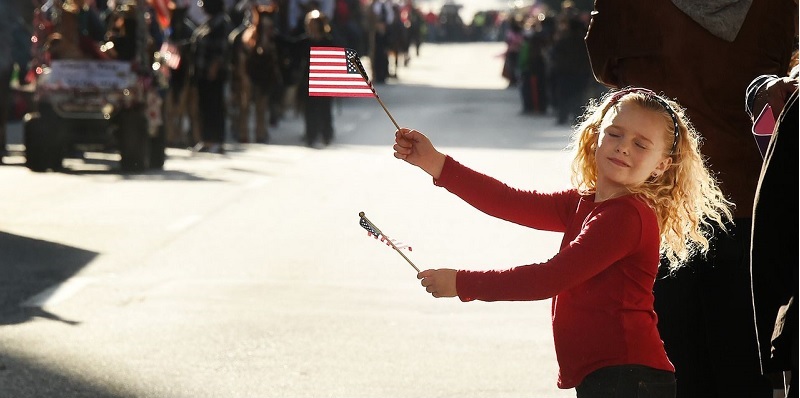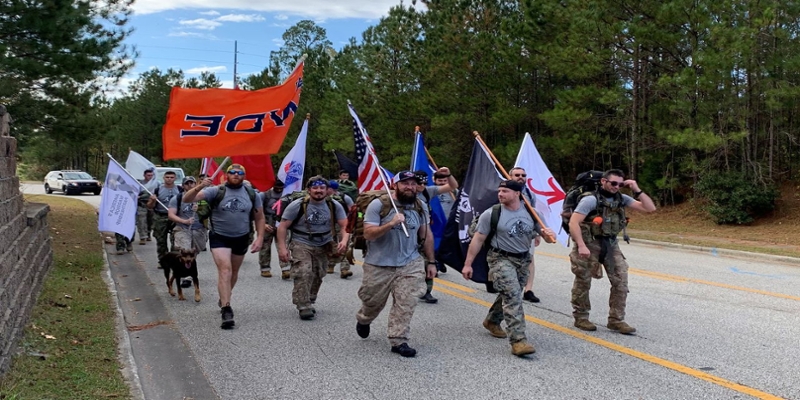The psychological health of military spouses is essential for the health and readiness of the family system. Thus, it is essential to understand contextual and familial factors that play a role in the psychological vulnerability of military spouses. This study examined how aspects of military life (number of deployments, perceived social support from the military community, and assessments of military life satisfaction) and family life (namely, couple well-being) played a role in the psychological vulnerability (depressive symptoms and personal well-being) of 222 U.S. military wives. Results suggested that when military wives felt more social support from the military community, they typically reported greater well-being. Wives who were more satisfied with military life tended to indicate better couple well-being. In turn, greater couple well-being was linked to less psychological vulnerability, specifically, fewer depressive symptoms and higher well-being. Overall, the military context had some bearing on the psychological vulnerability of military wives, especially when they did not feel supported by the military community. Importantly, however, the couple relationship appeared to be the most salient factor associated with the psychological vulnerability of military wives. Promoting healthier couple relationships appears to be a potential leverage point for intervention.
Library (51)
News (14)
Showing library results for: Mallory LucierGreer
APA Citation:
Quichocho, D., Lucier-Greer, M., Nichols, L. R., O’Neal, C. W. (2019). Retaining high-quality employees: Contextual considerations and strategies for facilitating retention within child care settings. Auburn, AL: Military REACH
Focus:
Other
Branch of Service:
Multiple branches
APA Citation:
Cooper, E., Vandenberg, C., Sjolseth, S., Short, K., Sherman, H., Hanson, E., O’Neal, C. W., & Lucier- Greer, M. (2024). Promoting adolescent well-being: Drawing from basic and applied developmental frameworks and research. Auburn, AL: Military REACH.
Focus:
Children
Youth
Programming
Mental health
Physical health
Branch of Service:
Multiple branches
Military Affiliation:
Active Duty
Population:
Childhood (birth - 12 yrs)
School age (6 - 12 yrs)
Adolescence (13 - 17 yrs)
APA Citation:
Frye-Cox, N., Short, K., O’Neal, C. W., & Lucier-Greer, M. (2022). Safety planning for intimate partner violence: Practical and contextual considerations for service providers. Auburn, AL: Military REACH
Focus:
Couples
Programming
Trauma
Branch of Service:
Multiple branches
Population:
Adulthood (18 yrs & older)
Young adulthood (18 - 29 yrs)
Thirties (30 - 39 yrs)
Middle age (40 - 64 yrs)
APA Citation:
Lucier-Greer, M., & Campbell, D. R. (2024). Role of military context and couple well-being in the psychological vulnerability of military wives in the United States. Journal of Military, Veteran and Family Health. Advance online publication. https://doi.org/10.3138/jmvfh-2023-0065
Focus:
Mental health
Physical health
Couples
Other
Branch of Service:
Multiple branches
Military Affiliation:
Active Duty
Population:
Adulthood (18 yrs & older)
Young adulthood (18 - 29 yrs)
Thirties (30 - 39 yrs)
5 Understanding inclusion in child care and youth programs
APA Citation:
Gregg, K., Golembiewski, K., O’Neal, C. W., Farnsworth, M., & Lucier-Greer, M. (2018). Understanding Inclusion in Child Care and Youth Programs. Auburn, AL: Military REACH.
Focus:
Children
Programming
Mental health
Physical health
Youth
Population:
Childhood (birth - 12 yrs)
Preschool age (2 -5 yrs)
School age (6 - 12 yrs)
Adolescence (13 - 17 yrs)
Adulthood (18 yrs & older)
Young adulthood (18 - 29 yrs)
6 Community-based assistance for victims of domestic violence
APA Citation:
O’Neal, C. W., Nichols, L. R., Quichocho, D., Herren, C., & Lucier-Greer, M. (2018). Community-based assistance for victims of domestic violence. Auburn, AL: Military REACH.
Focus:
Couples
Programming
Branch of Service:
Air Force
Army
Coast Guard
Marine Corps
Multiple branches
Navy
Military Affiliation:
Active Duty
Population:
Adulthood (18 yrs & older)
Young adulthood (18 - 29 yrs)
Thirties (30 - 39 yrs)
Middle age (40 - 64 yrs)
APA Citation:
Lucier-Greer, M., Nichols, L. R., Peterson, C., Burke, B., Quichocho, D., & O’Neal, C.W. (2018). Problematic sexual behavior among children and youth: Considerations for reporting, assessment, and treatment. Auburn, AL: Military REACH.
Focus:
Children
Youth
Parents
Programming
Child maltreatment
Trauma
Mental health
Population:
Childhood (birth - 12 yrs)
Neonatal (birth - 1 mo)
Infancy (2 - 23 mo)
Preschool age (2 -5 yrs)
School age (6 - 12 yrs)
Adolescence (13 - 17 yrs)
8 A review of evidence-based strategies to help military families navigate deployment
APA Citation:
Frye-Cox, N., White, M. L., O’Neal, C. W., & Lucier-Greer, M. (2022). A review of evidence-based strategies to help military families navigate deployment. Auburn, AL: Military REACH
Focus:
Children
Youth
Parents
Couples
Deployment
Mental health
Branch of Service:
Multiple branches
Military Affiliation:
Active Duty
Guard
Reserve
Population:
Childhood (birth - 12 yrs)
Adolescence (13 - 17 yrs)
Adulthood (18 yrs & older)
Young adulthood (18 - 29 yrs)
Thirties (30 - 39 yrs)
Middle age (40 - 64 yrs)
APA Citation:
Lucier-Greer, M., Frye-Cox, N., Reed-Fitzke, K., Ferraro, A. J., & Mancini, J. A. (2023). Military-related stress, self-efficacy, and anxiety: Investigating the role of marital quality in military couples. Family Process, 62(3), 1253-1271. https://doi.org/10.1111/famp.12833
Focus:
Couples
Mental health
Parents
Branch of Service:
Air Force
Army
Marine Corps
Navy
Multiple branches
Military Affiliation:
Active Duty
Population:
Adulthood (18 yrs & older)
Young adulthood (18 - 29 yrs)
Thirties (30 - 39 yrs)
Middle age (40 - 64 yrs)
Authors: Lucier-Greer, Mallory; Frye-Cox, Nick; Reed-Fitzke, Kayla; Ferraro, Anthony J.; Mancini, Jay A.
Year: 2023
Abstract
This study utilizes a stress process framework in conjunction with a crossover perspective to conceptualize how stress, specifically military-related stress, manifests within individuals and couples. An actor–partner interdependence mediation modeling approach was used in a cross-sectional sample of 243 military couples to examine whether difficulties managing military-related stress may erode one's own self-efficacy and, in turn, contribute to greater anxiety (actor effects) and/or one's partner's self-efficacy and, in turn, anxiety (partner effects). Further, the potential moderating impact of marital quality was explicated in the model to understand if greater marital quality might buffer the impact of military-related stress. There was support for the stress process model primarily regarding actor effects; fewer partner effects emerged. One's own perceptions of military-related stress, specifically higher stress, were related to lower levels of their own self-efficacy, and, consequently, higher anxiety, but military-related stress did not directly affect the partner's self-efficacy or anxiety. Both service members' and civilian spouses' marital quality had ramifications for civilian spouses' self-efficacy, specifically a buffering effect; that was not the case regarding civilian spouse effects on the military member. Findings point to specific ways in which military stressors have implications for personal well-being, the role of a strong couple relationship in buffering stress, especially for civilian spouses, and concomitant leverage points for supporting both individual and couple well-being.
APA Citation:
Lucier-Greer, M., Arnold, A. L., Mancini, J. A., Ford, J. L., & Bryant, C. M. (2015). Influences of cumulative risk and protective factors on the adjustment of adolescents in military families. Family Relations, 64(3), 363-377. doi:10.1111/fare.12123
Focus:
Children
Mental health
Youth
Branch of Service:
Army
Military Affiliation:
Active Duty
Population:
Childhood (birth - 12 yrs)
School age (6 - 12 yrs)
Adolescence (13 - 17 yrs)
Adulthood (18 yrs & older)
Young adulthood (18 - 29 yrs)
Authors: Lucier-Greer, Mallory; Arnold, Amy L.; Mancini, Jay A.; Ford, James L.; Bryant, Chalandra M.
Year: 2015
Abstract
The accumulation of stressors is adversely related to adolescent well-being. Using the contextual model of family stress and the theory of community action and change, the authors explored normative and context-specific risks factors among adolescents from military families (N = 1,036) and the role of relationships (family, informal networks, formal systems) as protective factors. Youth who reported higher levels of cumulative risk experienced more depressive symptoms, lower academic performance, and lower persistence. When accounting for family support and presence of informal networks, depressive symptoms were lower, academic performance was higher, and persistence was higher; participation in formal systems was associated with better academic performance. The influential nature of cumulative risk was mitigated in the presence of meaningful relationships, providing support for empirically grounded leverage points to enhance positive youth development.
APA Citation:
Lucier-Greer, M., Arnold, A. L., Grimsley, R. N., Ford, J. L., Bryant, C., & Mancini, J. A. (2014). Parental military service and adolescent well-being: Mental health, social connections, and coping among youth in the USA. Child & Family Social Work, 21(4), 421-432. doi:10.1111/cfs.12158
Focus:
Children
Parents
Youth
Branch of Service:
Army
Military Affiliation:
Active Duty
Population:
Childhood (birth - 12 yrs)
School age (6 - 12 yrs)
Adolescence (13 - 17 yrs)
Adulthood (18 yrs & older)
Young adulthood (18 - 29 yrs)
Authors: Lucier-Greer, Mallory; Arnold, Amy L.; Grimsley, Rebecca N.; Ford, James L.; Bryant, Chalandra; Mancini, Jay A.
Year: 2016
Abstract
The association between parental military work factors and adolescent’s well-being was examined. Data were collected from 1036 military youth. Using a within-group design, we examined adolescent’s well-being related to parental absence, school and neighbourhood transitions, paygrade/rank and participation in military-sponsored activities, and differentiated outcomes by sex and age. Two parental work factors primarily influenced adolescent’s well-being, parental paygrade/rank and engagement in military-sponsored activities. Parental paygrade/rank was the only factor uniformly related to poorer well-being, and this variable likely represents a more complex set of family circumstances. Engaging in military-sponsored activities served as a resource and was related to enhanced well-being. Individual-level differences and implications for social workers are discussed.
12 Toward a framework for military family life education: Culture, context, content, and practice
APA Citation:
Mancini, J. A., O’Neal, C. W., & Lucier-Greer, M. (2020). Toward a framework for military family life education: Culture, context, content, and practice. Family Relations, 69, 644-661. https://doi.org/10.1111/fare.12426
Focus:
Programming
Other
Branch of Service:
Air Force
Army
Coast Guard
Marine Corps
Navy
Multiple branches
Military Affiliation:
Active Duty
Guard
Reserve
Veteran
Population:
Adulthood (18 yrs & older)
Thirties (30 - 39 yrs)
Middle age (40 - 64 yrs)
Aged (65 yrs & older)
Very old (85 yrs & older)
Authors: Mancini, Jay A.; O'Neal, Catherine Walker; Lucier‐Greer, Mallory
Year: 2020
Abstract
Grounded in multiple ways of thinking about families, we propose a beginning framework for developing and implementing military family life education. We first situate this work within the context of established family life education frameworks. Then, we discuss features of military culture, including its contexts and demands on families, to highlight the realities of life as a military family and underscore available strengths that family life educators may build upon. This is followed by a discussion of family science theories emphasizing components that can inform and ground military family life education. Next, we draw on lessons from recent comprehensive reviews of programs, including their merits and demerits. Finally, we cite example programs, including those embedded in military family support systems themselves, and resources that are available to family life educators. Ultimately, we propose a set of ideas that inform a framework for developing and implementing military family life education aligned with the realities of family life as well as the vulnerabilities and the resilience of military families.
APA Citation:
Quichocho, D., & Lucier-Greer, M. (2021). The role of interparental conflict in adolescent siblings’ distress: A multi-informant study of military families. Children & Youth Services Review, 120, 105708. https://doi.org/10.1016/j.childyouth.2020.105708
Focus:
Parents
Children
Branch of Service:
Army
Military Affiliation:
Active Duty
Population:
Adulthood (18 yrs & older)
Young adulthood (18 - 29 yrs)
Thirties (30 - 39 yrs)
Middle age (40 - 64 yrs)
Authors: Quichocho, Davina; Lucier-Greer, Mallory
Year: 2021
Abstract
Military families navigate a combination of normative and military-specific stressors, and thereby may be at greater risk for experiencing interparental conflict (IPC). Using the ABCX Model, IPC was conceptualized as a family stressor associated with adolescent siblings’ distress outcomes (i.e., greater anxiety, lower positive adjustment), and siblings’ appraisals of IPC were conceptualized as the linking mechanism in this relationship. Within 117 military families, a service member parent, a civilian parent, and two siblings each individually reported on IPC in their family and the siblings reported on their own distress. Civilian parents’ reports of IPC were positively associated with their children’s IPC appraisals, but service member parents’ reports were not associated with their children’s IPC appraisals. Siblings who appraised greater IPC showed higher anxiety and lower positive adjustment outcomes. The indirect link between parent IPC reports and sibling outcomes, via sibling IPC appraisals, was significant for civilian but not service member parents across all outcomes. These findings highlight the importance of accounting for the health of the larger family system when working with adolescents and assessing the potential disconnect between parental accounts of IPC and adolescent appraisals of conflict when working with these families.
APA Citation:
Reed‐Fitzke, K., & Lucier‐Greer, M. (2020). The buffering effect of relationships on combat exposure, military performance, and mental health of U.S. Military soldiers: A vantage point for CFTs. Journal of Marital and Family Therapy, 46(2), 321-336. https://doi.org/10.1111/jmft.12402
Focus:
Deployment
Mental health
Other
Branch of Service:
Army
Military Affiliation:
Active Duty
Guard
Reserve
Population:
Adulthood (18 yrs & older)
Young adulthood (18 - 29 yrs)
Authors: Reed‐Fitzke, Kayla; Lucier‐Greer, Mallory
Year: 2020
Abstract
This study examined the role of cumulative combat experiences with regard to military performance and conduct and mental health among a sample of young soldiers from the Army STARRS dataset (N = 5,283). Higher levels of cumulative combat experiences were directly related to poorer performance and conduct and a greater likelihood of anxiety, depression, and post-traumatic stress disorder (PTSD). Military performance and conduct served as a linking mechanism between combat experiences and mental health. Using moderated mediation structural equation modeling, relationship disruptions were found to exacerbate the adverse effects of combat experiences; conversely, unit cohesion buffered the impact of combat experiences. Implications for military helping professionals include identifying leverage points for intervention, particularly strengthening the social connections of service members within and outside the military.
APA Citation:
Lucier-Greer, M., Howard, S., & Mancini, J. A. (2021). Parental relationship quality and adolescent depressive symptoms: Investigating the role of parental warmth and hostility in United States military families. Journal of Marital and Family Therapy, 47(3), 566-580. https://doi.org/10.1111/jmft.12451
Focus:
Couples
Mental health
Parents
Youth
Branch of Service:
Army
Military Affiliation:
Active Duty
Population:
School age (6 - 12 yrs)
Adolescence (13 - 17 yrs)
Adulthood (18 yrs & older)
Authors: Lucier‐Greer, Mallory; Howard, Samantha; Mancini, Jay A.
Year: 2021
Abstract
Military life is characterized by regular transitions; thus, parents are positioned to serve as stable protective factors for adolescents. We investigated a theory-informed model that assessed direct and indirect relationships between parental relationship quality, parental behaviors, and adolescent depressive symptomatology using cross-sectional data of military families in the United States (US). Participant families (N = 229), recruited via convenience sampling to take a computer-based survey, included an active duty father, his spouse, and an adolescent. Mother’s couple relationship quality was indirectly linked to adolescent depressive symptoms through maternal warmth. Conversely, father’s couple relationship quality was indirectly linked to adolescent depressive symptoms via paternal hostility. In other words, parental couple relationship quality was indirectly related to adolescent depressive symptoms, but this relationship differed by parent (i.e., warmth for mothers and hostility for fathers). Findings were similar for adolescent boys and girls.
APA Citation:
O’Neal, C. W., Lucier-Greer, M., & Mancini, J. A. (2019). The role of community context and psychological well-being for physical health: A dyadic study of military couples. Military Psychology, 31(3), 200-211. https://doi.org/10.1080/08995605.2019.1579608
Focus:
Couples
Mental health
Physical health
Branch of Service:
Army
Military Affiliation:
Active Duty
Population:
Adulthood (18 yrs & older)
Middle age (40 - 64 yrs)
Thirties (30 - 39 yrs)
Authors: O’Neal, Catherine W.; Lucier-Greer, Mallory; Mancini, Jay A.
Year: 2019
Abstract
Drawing from the social organizational theory of community action and change (SOAC) within a systemic biopsychosocial perspective, associations between community context (military community connections and satisfaction with military life), psychological well-being (depressive symptoms, anxiety, and self-efficacy), and physical health were examined for a sample of active duty service members and their civilian spouses (N = 236 couples) using an actor partner interdependence framework. Service members with higher levels of military community connections reported better psychological well-being. When civilian spouses were more satisfied with military life, both partners reported better psychological well-being. In turn, both spouses’ psychological well-being was related to their own reports of physical health. Statistically significant indirect effects were found between community contexts and spouses’ physical health. Enhancing community connections may be an important leverage point for supporting health and family readiness.
APA Citation:
Peterson, C., & Lucier-Greer, M. (2022). Accepting influence in military couples: Implications for couples’ communication and family satisfaction. Journal of Marital and Family Therapy, 48(4), 1075-1094. https://doi.org/10.1111/jmft.12574
Focus:
Couples
Mental health
Branch of Service:
Army
Military Affiliation:
Active Duty
Population:
Adulthood (18 yrs & older)
Young adulthood (18 - 29 yrs)
Thirties (30 - 39 yrs)
Middle age (40 - 64 yrs)
Authors: Peterson, Clairee; Lucier-Greer, Mallory
Year: 2022
Abstract
In popular relationship resources, accepting influence is regarded as a couple-level process vital for relational satisfaction. However, empirical research has demonstrated inconsistent evidence for these suppositions, with several studies identifying no associations between accepting influence and relationship outcomes, and, furthermore, several gaps in the literature remain with regard to our knowledge on accepting influence (e.g., little identified research on military couples or family outcomes). To address these gaps, a measure of perceptions of one's partner accepting influence was retrospectively created to examine accepting influence in Army couples (N = 244). With theoretical underpinnings from family systems theory, this study used an actor-partner interdependence approach to investigate the associations between partners’ accepting influence and couple communication satisfaction and satisfaction with the family. Service members’ perceptions of their partners’ accepting influence were associated with their own outcomes, whereas civilian spouses’ perceptions of partners’ accepting influence were related to both partners’ outcomes. Results suggest accepting influence may be an intervention point to improve couple and family outcomes.
APA Citation:
J. Ferraro, A., & Lucier-Greer, M. (2022). The case for multidimensional co-parenting behaviors as sources of chronic stress: Understanding pathways to mental health symptomology among divorced and separating adults. Journal of Family Nursing, 28(4), 353–367. https://doi.org/10.1177/10748407221124235
Focus:
Parents
Children
Programming
Mental health
Population:
Adulthood (18 yrs & older)
Young adulthood (18 - 29 yrs)
Thirties (30 - 39 yrs)
Middle age (40 - 64 yrs)
Authors: Ferraro, Anthony J.; Lucier-Greer, Mallory
Year: 2022
Abstract
The co-parenting relationship matters for postdivorce parental adjustment. This study explores the relative impact of different forms of co-parenting behaviors, coupled with an individual?s psychological resources, in explaining parent mental health in recently divorced or separated parents (n = 355). A latent variable structural equation model was fit to examine pathways between dimensions of co-parenting (support, overt conflict, self-controlled covert conflict, and externally controlled covert conflict), various psychological resources (satisfaction with the divorce decree, perceived competence of the co-parent, and self-efficacy), and adverse mental health symptomology. Significant direct pathways were identified between overt co-parenting conflict and adverse mental health. Indicators of co-parenting quality were tied differentially to various resources. Indirect effects were found for both self-controlled covert conflict and overt conflict on adverse mental health symptomology through self-efficacy. Leverage points and considerations for health professionals and practitioners working with divorcing parents are discussed.
19 Post-high school military enlistment and long-term well-being
APA Citation:
Lucier-Greer, M., O’Neal, C. W., Peterson, C., Reed-Fitzke, K., & Wickrama, K. A. S. (2023). Post-high school military enlistment and long-term well-being. Emerging Adulthood, 11(1), . https://doi.org/10.1177/21676968221131854
Focus:
Mental health
Physical health
Youth
Branch of Service:
Army
Air Force
Navy
Marine Corps
Multiple branches
Military Affiliation:
Active Duty
Population:
Adolescence (13 - 17 yrs)
Childhood (birth - 12 yrs)
Young adulthood (18 - 29 yrs)
Adulthood (18 yrs & older)
Authors: Lucier-Greer, Mallory; O’Neal, Catherine W.; Peterson, Clairee; Reed-Fitzke, Kayla; Wickrama, K. A. S.
Year: 2023
Abstract
Longitudinal data from the National Longitudinal Study of Adolescent to Adult Health were used to evaluate the impact of post-high school military enlistment during emerging adulthood. Comparisons were made between matched samples of emerging adults who enlisted in the military (n = 576) and their civilian counterparts (n = 576) on well-being over a decade later. Well-being was broadly conceptualized to reflect socioeconomic well-being, physical health, mental health, and risky lifestyle behaviors. Matching maximizes confidence that findings reflect differences due to enlistment, rather than pre-existing characteristics that contribute to both enlistment rates and well-being. No consistent differences emerged between the matched samples. Service members reported some indicators of better mental health (perceived stress, anxiety), yet higher rates of post-traumatic stress disorder diagnosis, and civilians reported some indicators of better physical health. Strengths-based perspectives and models that account for the concurrent possibility that military service may positively and negatively impact well-being are needed in future research.
APA Citation:
Arnold, A. L., Lucier-Greer, M., Mancini, J. A., Ford, J. L., & Wickrama, K. A. S. (2017). How family structures and processes interrelate: The case of adolescent mental health and academic success in military families. Journal of Family Issues, 38(6), 858–879. doi:10.1177/0192513x15616849
Focus:
Children
Mental health
Other
Parents
Youth
Branch of Service:
Army
Military Affiliation:
Active Duty
Population:
Childhood (birth - 12 yrs)
School age (6 - 12 yrs)
Adolescence (13 - 17 yrs)
Adulthood (18 yrs & older)
Young adulthood (18 - 29 yrs)
Authors: Arnold, Amy L.; Lucier-Greer, Mallory; Mancini, Jay A.; Ford, James L.; Wickrama, K. A. S.
Year: 2017
Abstract
The transitional nature of military life positions the family to serve as the primary and most stable influence for adolescents in military families. These military-related transitions and stressors may also put youth at risk for depression and academic challenges. This study examines the relative impact of family structure (family composition at a given time point) and family processes (interpersonal interactions developed over time) on important adolescent outcomes (depressive symptoms and academic performance) for a sample of military youth (N = 995). While family structure, particularly being part of a stepfamily or single-parent family, was related to greater depressive symptoms and poorer academic performance, family processes (family support and parent–adolescent connection) and personal resources (initiative) also accounted for depressive symptomology and academic performance. Importantly, when modeling family processes, no differences were found across family structures. Military youth thrive in diverse family forms in the presence of healthy family processes.
DR. NICK FRYE RECEIVES PROFESSIONAL POSTER AWARD GIVEN BY THE FAMILY THERAPY SECTION OF NCFR
AUBURN UNIVERSITY AWARDED MILITARY REACH FOR SECOND CONSECUTIVE TERM
MISSION ALABAMA: LOOKING BACKWARD TO KEEP MARCHING FORWARD
WHO’S RESPONSIBLE FOR COMMUNITY ACTION AND CHANGE?
OPERATION IRON RUCK: JOINING FORCES TO COMBAT VETERAN SUICIDE HELP
HOW TO SERVE THOSE WHO SERVE – MISSION: ALABAMA

Loading








